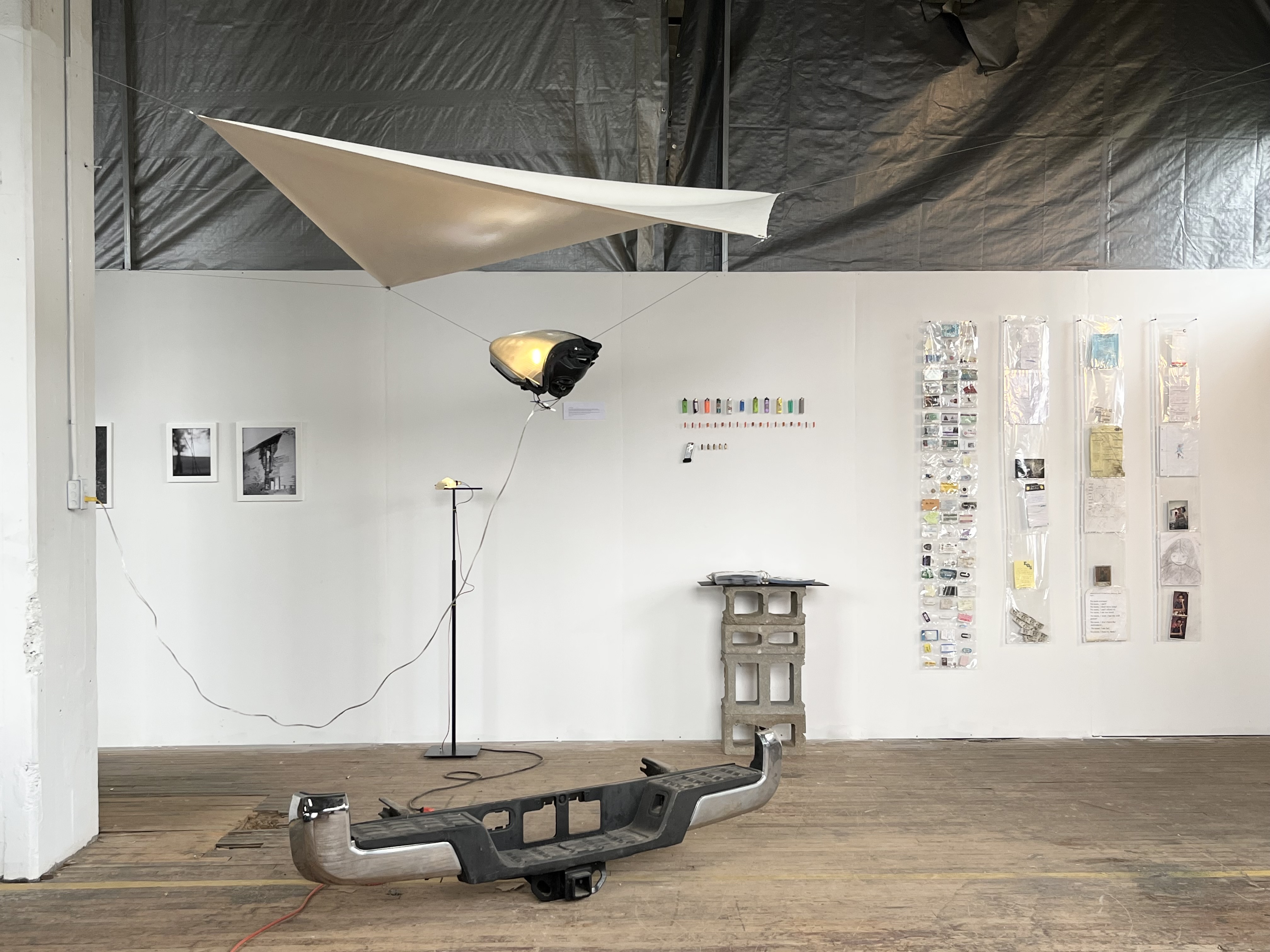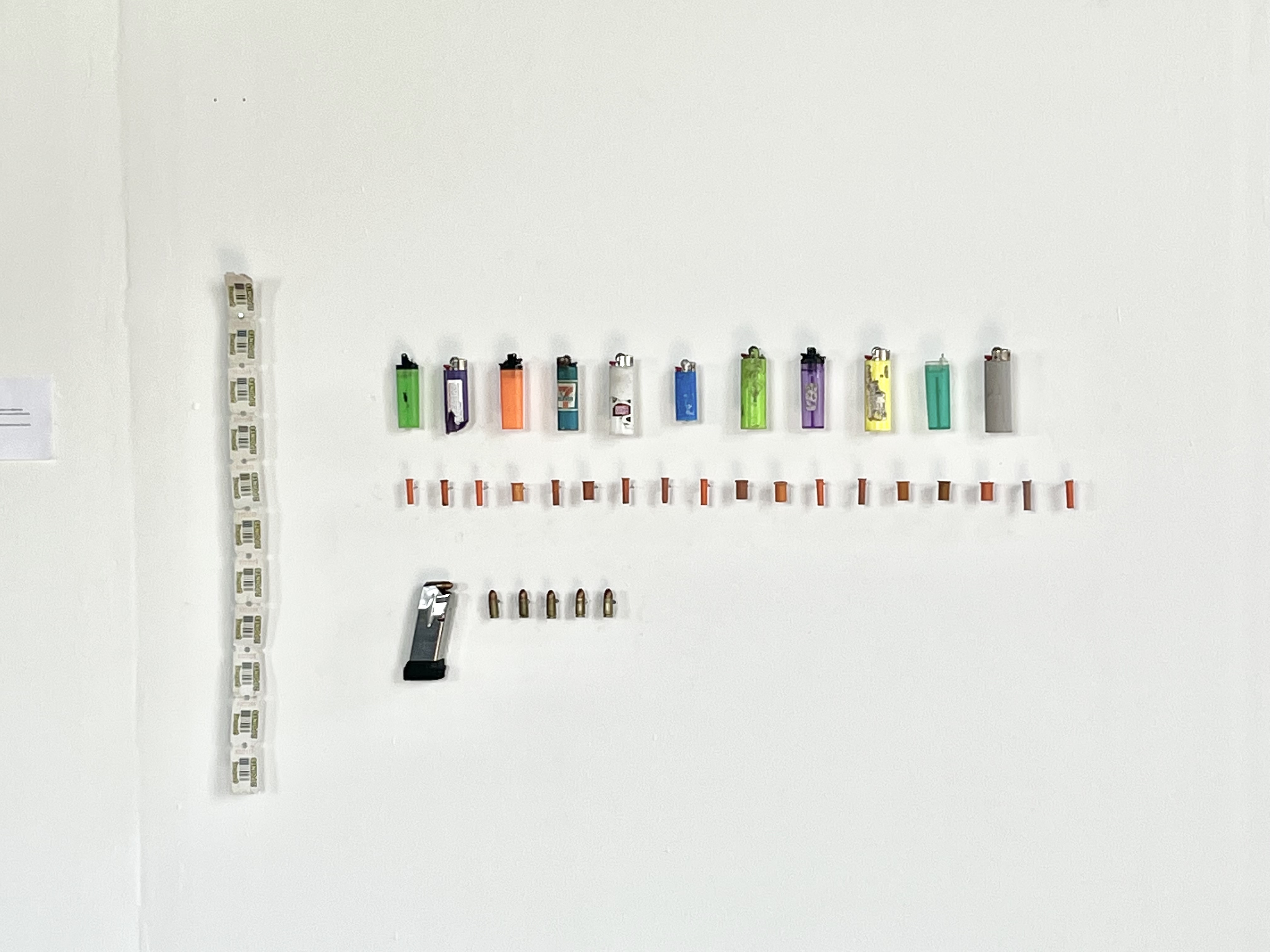A group exhibition on life in post-industrial Ohio.
April 23, 2022
The first exhibition Curated by Clay Brown.

Illustration, 2nd Grade class of Cleveland’s Breakthrough Public Schools.
Working With Tess Young and her first graders at Breakthrough Public Schools, Cleveland, a series of oil pastel and watercolor illustrations were made to reflect on the feelings created by factories, pollution, and industrialism but also creating imagery of hopeful imaginary futures.
Seeing these issues through the eyes of children abandons all preconceived notions and assumptions, resulting in honest creative speculation.





Photo, Joshua J. Berg
Joshua Berg (b.1991) is an American photographer based in northern Kentucky, primarily constructing collections that explore his relationship with small towns surrounding the Ohio and Licking Rivers. His study of anthropogenic landscapes emphasizes the correlation between biological and physiological effects of man-made barriers within suburban and rural environments.

Soundscape, Logan Brown
Logan Brown’s compositions join the ambient and the chaotic to form an immersive soudscape that takes the listener through the brutal realities of animal abuse in the food industry.
These works were played through a hanging sound panel made of salvaged ply-wood. This installation piece by Logan Brown confuses the viewer as they cannot initially tell what the audio source is.



Archival, Alex Easterday
Alex’s work focuses on the connection between objects dropped, thrown away, forgotten, or otherwise discarded; and the people behind them. Each piece has a story and a human element we can only theorize and explore through the small amount of context weve been given. These 1000+ objects Alex has archived have been collected through days spent on his bicycle exploring behind buildings, down small alleys, and arteries of Cincinnati.





Arrangments Using Invasive Species of Ohio, Julia Haug
Invasive plants are plant species that become established in non-indigenous plant communities and replace native vegetation.
Habitat destruction and invasive plants are the leading cause of native biodiversity loss. Annually, the U.S. loses $35 billion and three million acres of land to invasive plants. They also significantly threaten restored areas and endangered species. As international trade expands and the human population continues to rise, the spread of invasive plants is inevitable. However, action can be taken to help slow the rate of destruction conducted by these plants.
One of the oldest invasive plants of the Midwest is lawn grass.
The majority of American homes are surrounded by a green carpet of grass, yet many lawn owners are unaware of the origins of the plant itself. Although these grasses can be manipulated into a bright green monoculture, most turf grasses planted in America originate from Europe. Even Kentucky bluegrass, a grass that has provoked American culture and pride, is not native. This grass originates from areas throughout Europe, North Africa, and Asia; it thrives in cool and moist climates, unlike the warm and dry American Midwest.
In the 1700s, Europeans brought disease, plants, and animals to the Americas. When the first cattle, goats, and sheep touched ground in North America, they overgrazed the native grasses. This then offered the opportunity for invasive European grasses to flood the barren areas and fill the niche. Allegedly, Native Americans in the 18th and 19th century coined the nickname “white man’s tracks” for Kentucky Bluegrass because almost everywhere a white man went, Kentucky bluegrass would be right there with him.
Throughout colonial America and up until the mid-twentieth century, most Americans could not afford the time, money, or space to keep lawns. Instead, they reserved their land for raising food and livestock. During the years following World War Two, American homes put on a new face. Consumer marketing campaigns, mass home building, and the first Masters golf tournament broadcasted in color (1962) led to a dramatic increase in lawn sales. For lawn care companies, grass is a form of planned obsolescence. Lawns will not be perfect unless products are consistently bought to make them perfect.
“The search for the perfect lawn unearths unsavory aspects of the American character. Its history reenacts imperial expansion; it expresses man’s insatiable desire to exploit and control his environment.” (Michele Bogart, 1995)



Painting and Illustration, Ryan Kmieske
This body of work emphasizes the beauty hidden within the tedium of entry level service jobs; presenting inhuman, clean layouts accented with imagery intended to evoke the feeling of a hyperstimulated yet under-engaged mind left to wander.

Rennovation, Curation, Installation, Clay Brown

A huge thank you to all of the artists that made this event possible:
Joshua J Berg
Alex Easterday
Julia Haug
Logan Brown
Ryan Kmieske
2nd Grade class Breakthrough Public Schools. Glenville, Cleveland
Tess Young
Mitchell Huegen
Robby Hoover
Drew Dubs
Oliver Stenken
Thank you to @bladeshop.bg for opening your space to us.
Endless thanks to all my friends and family who helped along the way,
Institute for Postnatural Studies
Gabriel Alonso
Matteo Guarnaccia
Fillip Bryan
Anastacia Hartinger
Aarron Green
Sarah Lyons
Mackenly Herron
Justin Kelley
Geoff Cochran
Brigid O’kane
Sam Edwards
Daap Build Lab
Colin Klimesh
Lauren Maenle
And everyone else <3